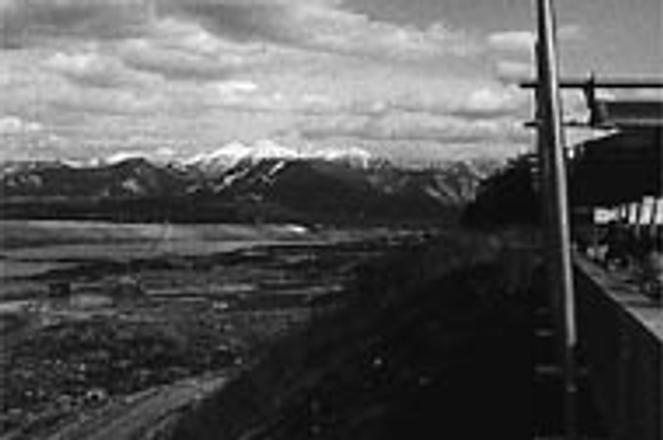The Váh River Dam project highlights the importance of the waterway for Žilina throughout its history.Ľubica Sokolíková
It is a fresh, early May morning. Wind brings tiny droplets of water from the river. It seems though, that a group of people standing under a covered sightseeing platform don't mind.
Their gaze follows a hand, apparently an expert among them, pointing toward the horizon while describing the construction of a multi-purpose water project on the Váh River. A moment later they try to recognize the place where they have just looked from the drawings and plans situated on the stands of the sightseeing platform.
When ready, the water reservoir will be 7.5 km long and 0.6 km wide. Numerous questions and consonant mumbling prove that they are impressed.
A lot of people are attracted by this place - a place that causes livid discussions among opponents and defenders of the construction of the Žilina water project. Now, with construction already on its way, they are coming to see it with their own eyes. Feelings are mixed from those who will be moved to newly-built family houses because their old homes will disappear underwater. See it in their eyes, partly sad, partly excited in anticipation.
The Váh River has been closely tied with Žilina and its inhabitants for centuries. Rafters transported timber from the mountains, tradesmen brought their goods to sell at the town. Several castles (Strečno, Starhrad, Hričov) built on both banks of the Váh River have witnessed historic events. The area has grown in importance since it was first mentioned as a tiny settlement called "terra de Selinan."
Budatín Castle - just a 20 minute walk from the railway station or a short 10 minute ride on bus 22 - situated on the confluence of the Váh and Kysuca rivers was built to guard the ford. A decorated Romanesque tower, which was the central fortification, has been preserved. The castle now houses the Považské Museum. Inside from the original castle is a wood panelled dining room replicating a Renaissance banquet hall and other various exhibitions, but the most precious is the Tinkers Trade exhibition.
Tinker tales
The intricate skills and creative fantasy of north Slovak tinkers is without a doubt ravishing. It is absolutely amazing what can be done from a piece of wire: furniture, candle-holders, bird-cages, baskets etc. It is still possible to meet some old people who remember the tinkers walking with a hamper on their back through villages shouting, "Pots tinkering, please."
After traversing the slightly longer walk from the castle to downtown Žilina, rest on one of the benches near the mosaic floor fountain under the church balustrade on the Hlinkove nám.
Sitting there, admire the beautiful panorama of the city. Žilina's skyline is defined by the expressive two mighty stone towers with the same pyramid ending roofs belonging to St. Trinity Church - a parish church. It was originally a Gothic church built probably in 1400 on the older foundations of the city and then repaired in 1540. The altar is decorated by the beautiful picture of the Holy Trinity painted by Jozef Božetech Klemens in 1870 and a sculpture of St. Anna by the artist Fraňo Štefunka. The bell tower next to the church, named Burian's Tower, was built in 1530.
The "parsonage staircase" will lead you to the most precious jewel of Žilina's historic core - Marianské námestie. It is the only square in Slovakia with preserved arcades of burgher houses. Exactly 106 arcade passages extend through 44 houses. Arcades can be found in adjacent streets from the square at Radničná ul. and Hodžova ul.
The square is as old as the town itself, dating back to the 13th century. Today the fully reconstructed burgher houses have turned into small shops, luxurious boutiques and cosy cafes. From each corner of the square a pair of streets run at right angles between them. Such a square, more often found in Western countries, is the only one of its kind from the entire former Hungarian Kingdom. That is why Žilina was called "Hungarian Nuremberg."
In case you have had enough of Renaissance this and Gothic that, you can slowly walk up to the "Bulvar" shopping street, a 245 meter long pedestrian zone, which documents the architectural creation of socialist realism. With the Japanese sakura trees alongside now blossoming in beautiful rich pink color, their sweet scents dance on breezes. A huge park in the neighborhood hides the biggest wooden multi-purpose sport hall in Europe. Nearby, go for a swim in the newly reconstructed indoor swimming pool.
A good dinner might be a pleasant end to the day. For something small and cute, try Tosca on Štúrova street in the historical core. For those, who like being pampered the Gastro-Novum on Závodská street is the perfect choice. Besides an excellent kitchen with local specialities young waiters in training are eager to help. Three of them will jump at the chance to help your take off your coat.


